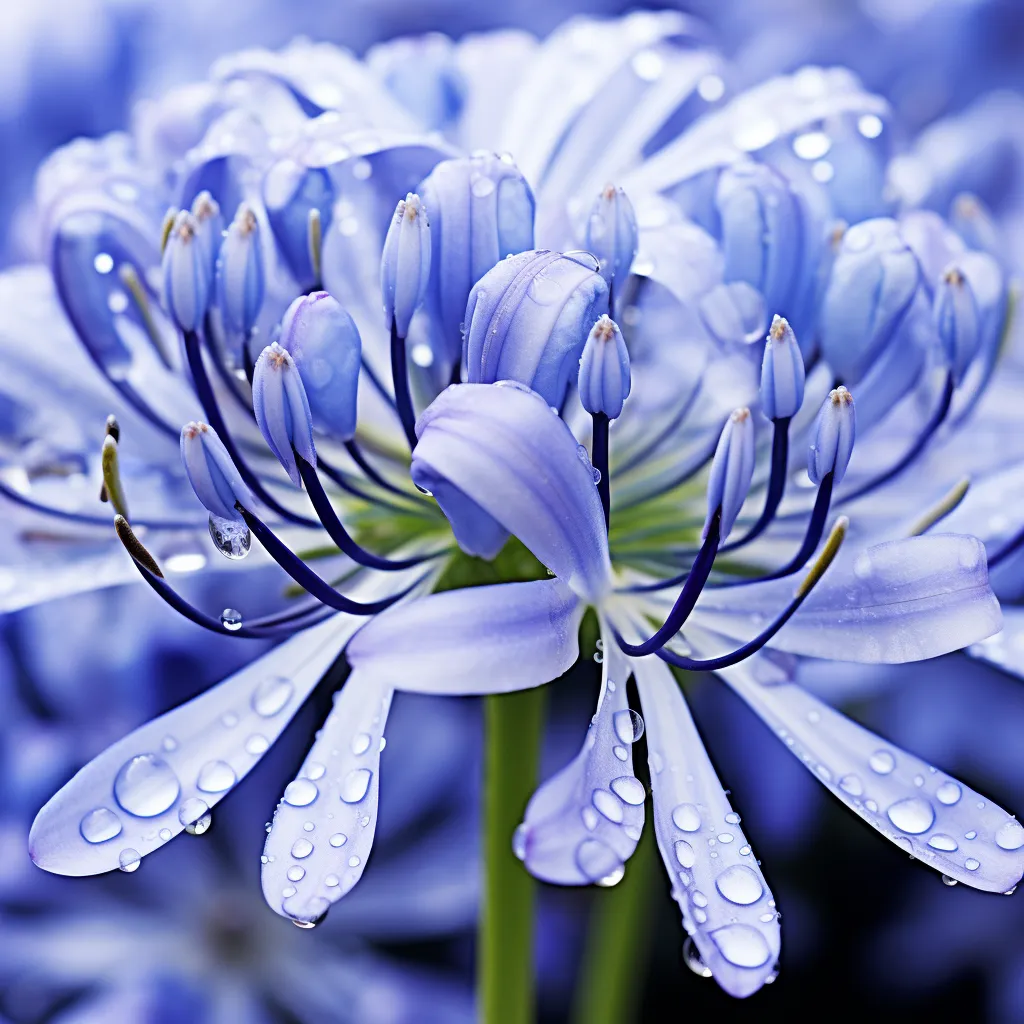Story of Day :
Contents
Agapanthus Luly (African Lily Luly) Plant Care Tips
Gardening can be a fun and rewarding hobby, and one plant that can add beauty to any garden is the Agapanthus Luly, also known as the African Lily Luly.
With its stunning blue flowers and strappy green leaves, this perennial plant is a favorite among gardeners.
In this article, we will explore some tips on caring for Agapanthus Luly to help you achieve beautiful blooms year after year.
Choose the right location
The first step in caring for Agapanthus Luly is selecting the right location for your plant.
This plant thrives in full sun or partially shaded areas.
It prefers well-draining soil with a pH level between 6.0 and 7.5.
If your soil tends to retain water, consider planting your Agapanthus Luly in raised beds or containers.
This will help prevent root rot and ensure that your plants have proper drainage.

Watering requirements
Adequate watering is essential for the health of your Agapanthus Luly plants.
While these plants are drought-tolerant once established, they still require regular watering during hot summer months.
Water deeply once a week during dry spells, making sure that water reaches down to the roots of the plants.
Avoid overwatering as it may cause root rot or other fungal diseases.
Fertilizing routine
To encourage healthy growth and abundant blooms, it’s important to fertilize your Agapanthus Lulys regularly during their growing season from spring to early fall.
- Use a balanced slow-release fertilizer with equal amounts of nitrogen (N), phosphorus (P), and potassium (K).
- Apply the fertilizer according to the manufacturer’s instructions, usually every four to six weeks.
- Avoid applying fertilizer during winter dormancy.
Pruning and deadheading
To keep your Agapanthus Luly plants looking their best, regular pruning and deadheading are necessary.

- Remove any faded or wilting flowers by cutting them off at the base.
This process is called deadheading and encourages continuous blooming throughout the season.
- In late winter or early spring, prune back any damaged or overcrowded foliage.
Cut back the leaves to about two inches above ground level.
This will rejuvenate the plant and promote new growth in spring.
Pest and disease control
While Agapanthus Luly plants are generally resistant to pests and diseases, they can occasionally face some issues:
- Slaters: These small crustaceans feed on decaying organic matter but can damage young Agapanthus Luly leaves.
Use organic slug pellets or beer traps to control slaters if necessary.
- Crown rot: Overwatering or poorly drained soil can lead to crown rot in Agapanthus Luly plants.
To prevent this, ensure proper drainage and avoid excessive watering.

Multiplication through division
If you want to expand your collection of Agapanthus Luly plants without purchasing new ones, you can divide existing clumps every three to five years during early spring before new growth begins.
- Dig up the entire clump using a garden fork or spade.
- Gently separate the individual plants by pulling them apart or using a sharp knife.
- Replant the divided plants in well-prepared soil, ensuring each plant has enough space to grow.
Summary

Caring for Agapanthus Luly plants is relatively easy, and with these tips in mind, you can enjoy their beautiful blue blooms year after year.
Select a suitable location with well-draining soil, water deeply but avoid overwatering, fertilize regularly during the growing season, prune and deadhead to maintain plant health and appearance.
Keep an eye out for pests like slaters and prevent crown rot by ensuring proper drainage.
Don’t forget that you can multiply your collection through division every few years.
By following these care tips and providing your Agapanthus Luly plants with the love they need, you’re sure to have a stunning garden that will impress everyone who visits.